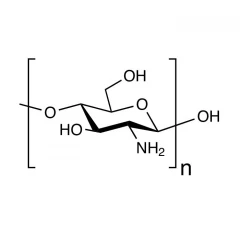
| Cat nr | Stock | Quantity (gr) | Price |
| C1124-100 | Out of stock | 100 g | Sjonni@4MedChem.com |
| C1124-250 | Out of stock | 250 g | Sjonni@4MedChem.com |
| C1124-500 | Out of stock | 500 g | Sjonni@4MedChem.com |
| C1124-1000 | Out of stock | 1 kg | Sjonni@4MedChem.com |
**Pricing disclaimer
Chitosan is a biodegradable, biocompatible, and non-toxic polysaccharide derived from chitin, the second most abundant natural polymer after cellulose. It is primarily extracted from the exoskeletons of crustaceans (such as shrimp, crab, and lobster) and fungal cell walls. Due to its unique antimicrobial, film-forming, and bioadhesive properties, chitosan is widely used in biomedical, pharmaceutical, agricultural, environmental, and industrial applications.
Wound Healing & Hemostatic Agents
Drug Delivery Systems
Tissue Engineering & Implants
Antimicrobial & Antifungal Activity
Water Purification & Heavy Metal Removal
Biodegradable Packaging & Plastics
Conclusion
Chitosan is a versatile, natural biopolymer with diverse applications in medicine, agriculture, water treatment, and packaging. Its biocompatibility, antimicrobial properties, and ability to form hydrogels and nanoparticles make it an essential biomaterial for future innovations in biomedicine, food preservation, and sustainable materials. As research progresses, chitosan-based technologies are expected to play a significant role in eco-friendly and advanced healthcare solutions.